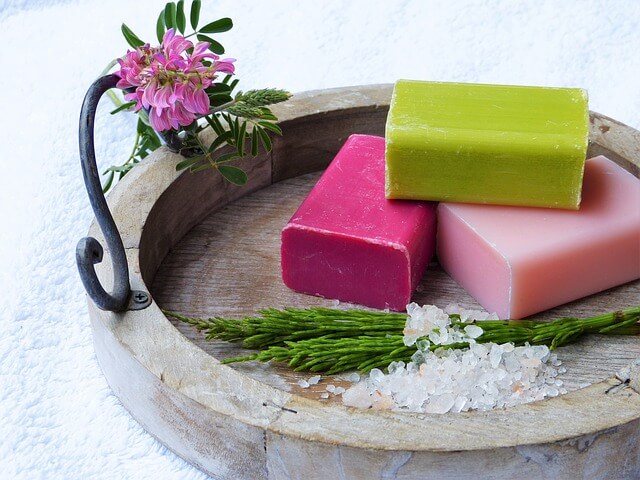A clogged bathtub drain is a plumbing problem everyone deals with at some point. Unlike many household problems that happen suddenly and unexpectedly, like storm flooding or a pipe pierced by a root, this draining difficulty often results from the gradual build-up of material in your drain over time.
The experts at CW Service Pros are always here to assist you with any drain cleaning needs you have. But as a homeowner, it can be helpful to understand what causes a bathtub backup in the first place and how to combat them!
Common Clog #1: Hair
The most common cause of a clogged bathtub is hair. When you bathe or shower, your hair has nowhere to go but down the drain. When it slithers down the drain, it can get stuck to the sides of the piping, building up over time and attaching to other materials—like dead skin or scum—that went down the pipes. This prevents proper drainage.
Common Clog #2: Soap Scum
Another common cause of clogs in the bathtub is soap scum. Ever noticed white stains on your shower walls? That’s soap scum. It collects in the same way in your drain over time. As the soap scum washes down the drain, it solidifies, sticking to the sides of piping until it creates a blockage.
Common Clog #3: Hard Water
It doesn’t seem like water in a bathtub could cause problems, but hard water contains high mineral content. Although it’s invisible to the naked eye, those minerals can prove costly when it comes to the life of your drain. Just like hair and soap scum, it collects on the sides of piping, building up over time. Once it collects, any tiny debris adds to the clog. Water with higher pH levels make this problem even worse.
Common Clog #4: Sand, Dirt, and Debris
If you’ve traveled to the beach recently or have kids that regularly play outside, sand and dirt can quickly accumulate in your drain. This is especially true if your shower does not have particularly strong water flow.
Consider rinsing off outside—at a hose or a beach shower—to remove some of the sand and dirt before coming in to shower.
Common Clog #5: All the Above!
Most clogs are actually caused by a combination of all four common causes:
- Hair
- Soap scum
- Hard water
- Debris
Once one of these starts to collect, it’s easy for any of the others to latch on and add to the clog. Hard water is especially difficult when combined with a hair or soap scum clog.
3 Tools for Unclogging Your Bathtub
In most cases, unclogging your bathtub drain is straightforward, especially if the clog is near the top of the pipe or in the drain basket, where 80% of clogs begin.
1. Plunger
The plunger isn’t only for your toilet! It works in the bathtub too.
To use it, place your plunger over the drain, and fill your tub with water until it covers the base of the plunger. The air below the plunger and the water above creates the pressure needed to help break up clogs. After you plunge, turn on the hot water to flush any remaining debris.
2. Homeowner’s Plumbing Snake
Perfect for a number of clogs in your bathtub, especially hair, a homeowner’s plumbing snake is inexpensive and easy to find at hardware stores. If you don’t have one on hand, bending a wire coat hanger into a straight line with a hook at the end can also work, but not as well, especially for tougher or deeper clogs.
To use the snake, remove the overflow drain cover and any stopper assembly. Place the snake down the drain, and fill your tub a quarter full with hot water. Continue pushing the snake into the drain until it stops; this is most likely the culprit. Twist the snake while pushing up and down to work into the clog. Once the water starts to drain, you can pull the plumbing snake out and replace the cover.
3. Non-Toxic Drain Cleaners
For some clogs, you may want to consider the benefits of using a drain cleaner. Although chemical cleaners are easy and cheap, we recommend using a non-toxic solution. Your lungs, pipes, bathtub finish, and the environment will thank you. Choices include baking soda mixes, enzymatic drain cleaners, and more.
3 Tips for Avoiding Bathtub Clogs
An ounce of prevention is worth a pound of cure! This is even true for your bathtub drain.
1. Clean the drain basket.
One of the simplest steps you can take to prevent bathtub clogs is regularly cleaning or wiping down the drain basket. Hair usually collects on the crosshairs before going into the pipe, so clearing the hairs and throwing them away after every shower can do wonders for your bathtub.
2. Don’t pour soap down the drain.

To avoid build-ups of soap scum, minimize the amount of soap you put down the drain. Although you want to be clean, make sure you’re not pouring soap or shampoos into your tub’s pipes. Also avoid dropping pieces of bar soap down the drain. These accumulate and can cause problems.
3. Use a descaler or water softener.
Descalers are great at preventing clogs from hard-water deposits. They combat the high levels of calcium and magnesium in your water supply by preventing them from sticking to pipes, fixtures, and drains. Descalers will increase the efficiency of all your plumbing system parts, including:
- Water heaters
- Faucets
- Ice makers
- Washing machines
Another solution is a water softener. Though more expensive to purchase, install, and maintain then a descaler, a water softener removes hard water by adding salt to the water, changing its composition. A descaler should also be installed to descale the pipes before using this system. If you choose a larger water-softening system, it can help other drains in your home as well and even make doing laundry easier. You should have a professional install the device for you.
If none of the above solutions worked for you or you’re looking to install a descaler or water softener, it’s time to call a professional! Our trained plumbing technicians can help. Give us a call at 972-395-2597!

















